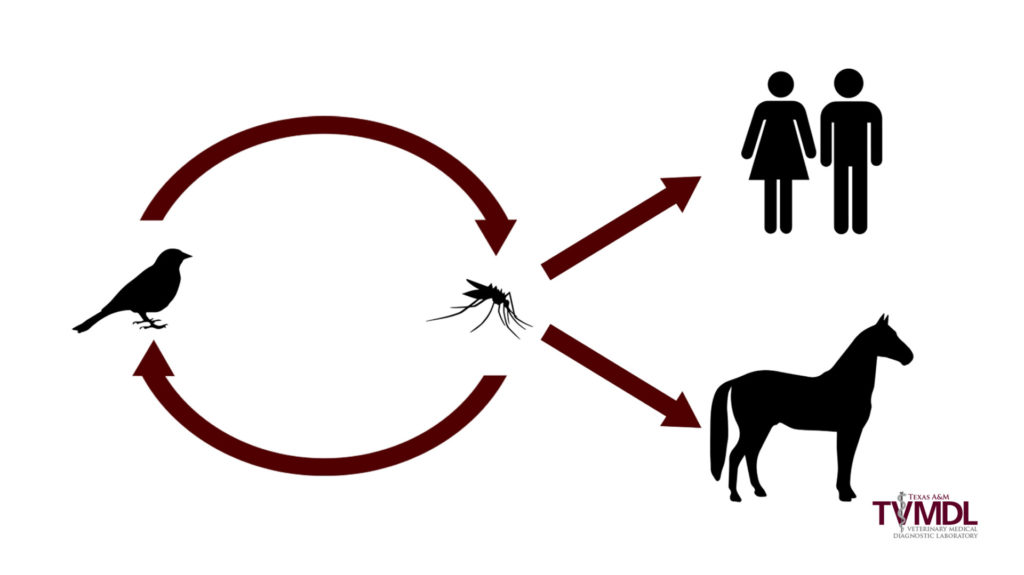Recently, most of Texas has experienced record-setting rainfall. Flood waters can lead to a multitude of animal health concerns, but as the weather begins to warm up, one concern has the potential to be the most harmful: mosquitos.
When it comes to animal health, mosquitos are small vectors that pack a powerful punch. They have the potential to carry numerous pathogens, but the two viruses horse owners should be concerned about are West Nile virus (WNV) and Eastern Equine Encephalitis virus (EEEV).
What is West Nile Virus?
West Nile virus is a flavivirus that occurs worldwide. It is similar to other flaviviruses, such as Zika and yellow fever, in that it is transmitted by mosquitos. The virus was first detected in the U.S. in 1999 and within a few years had spread throughout the country. West Nile virus is now considered endemic in all of the Americas.
What is Eastern Equine Encephalitis Virus?
EEEV is an often fatal alphavirus that causes encephalitis, i.e. swelling of the brain. The virus was first recognized in Massachusetts horses in 1831 and has since been reported across various parts of the eastern U.S. Although much rarer than West Nile virus, EEEV is similar in that humans are considered a susceptible species, if bitten by an infected mosquito.
Transmission
WNV and EEE are both reliant on a natural transmission cycle between birds and mosquitos. Birds serve as a reservoir host for the viruses that cause both diseases. Mosquitos that feed on infected birds serve as disease-vectors and transmit the disease to susceptible animals, such as horses.
There is no evidence of the virus being transmitted directly from horse to horse or from horses to humans.
Neither virus discriminates when it comes to transmission as species within any age group are susceptible.
Clinical Signs of WNV and EEEV
Clinical signs for both WNV and EEV are similar and include:
- Fever
- Muscle twitching
- Weakness in legs
Diagnosis for each virus cannot be made solely based on clinical signs. Several other equine diseases share similar signs and therefore, diagnostic testing is the only method to determine the cause of illness.
What can be done to prevent WNV, EEEV, and other mosquito-borne diseases?
As flood water recede, horse owners should ensure there are no other sources of standing, stagnant water. These reservoirs are ideal environments for mosquitos to breed. In addition, the primary method of reducing risk in horses for both viruses is vaccination. The Texas A&M Veterinary Medical Diagnostic Laboratory (TVMDL) encourages horse owners to work with a veterinarian to establish a vaccination program, especially in areas with a historical presence of both viruses.
In addition to WNV and EEEV, TVMDL offers a variety of tests that may be of assistance to horse owners. The agency also offers a set of diagnostic plans specifically for equine. To learn more about TVMDL’s equine tests or diagnostic plans, visit tvmdl.tamu.edu or call one of the agency’s full service laboratories in College Station or Canyon.
